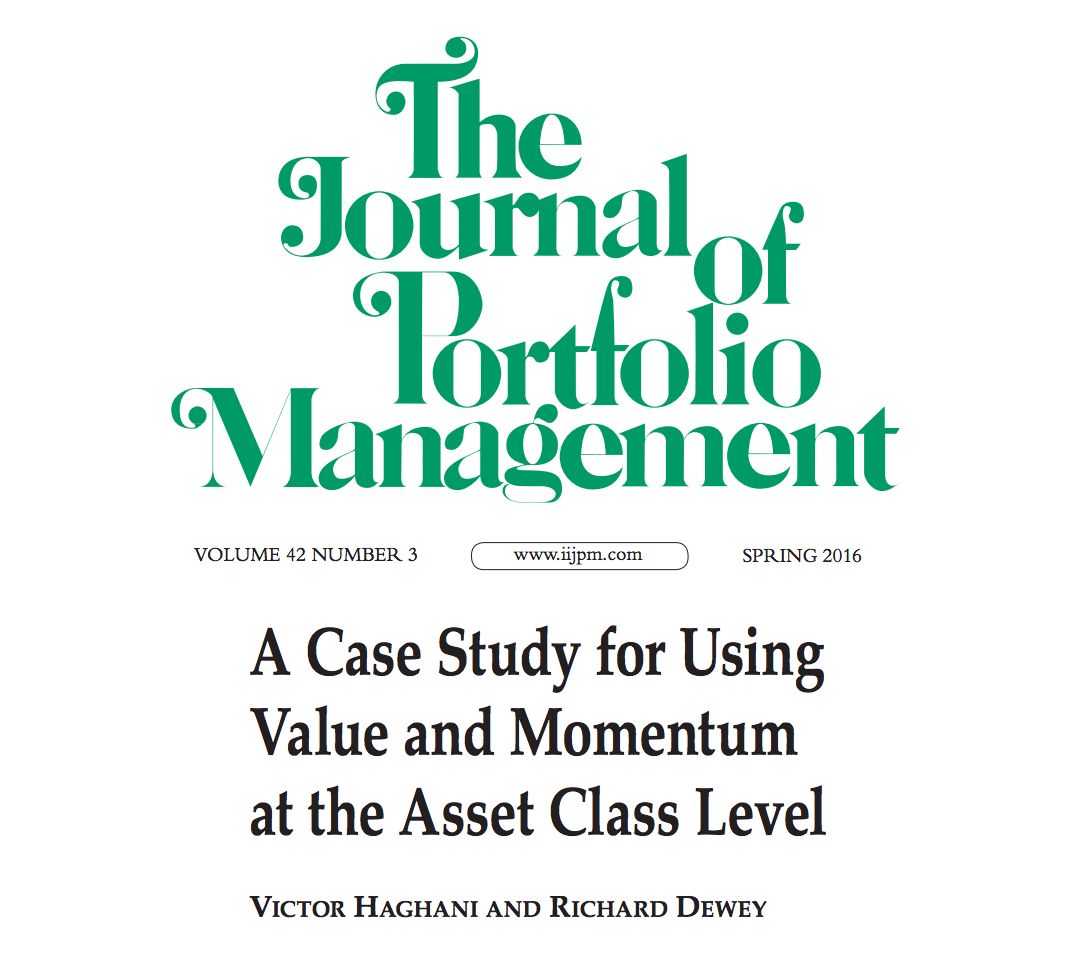May 27, 2016
Risk and Return
Elm’s strategy in The Journal of Portfolio Management
While past performance is not necessarily indicative of future returns, we draw comfort from knowing that the way we invest has done well over the past nearly one hundred years.1 This is the main conclusion of our research paper, “A Case Study for Using Value and Momentum at the Asset Class Level,” 2 which was just published in The Journal of Portfolio Management. We believe that our simple rules-based approach to dynamic asset allocation has the added benefit that it helps investors avoid feeling they need to make ad hoc changes to their portfolios based on current events, which tends to result in subpar long-term returns.
Here are a few highlights, which you can find in the Exhibits 6, 8 and 9 in the paper:
- In every decade since 1926, a dynamic asset allocation approach based on value and momentum applied to asset classes outperformed a static balanced equity/bond Baseline.
- 2.5% per year was the increase in return delivered by value and momentum since 1975. It also reduced the risk of large losses. The increase in returns in the 1926-1975 period was similar.
- Bear markets were the periods when value and momentum did best, resulting in significantly less negative returns than the static Baseline.
- Value and momentum worked well together. In the 1975-2013 period, the biggest loss of a portfolio that relied on value combined with momentum was significantly lower than the worst loss suffered by portfolios that relied on value or momentum applied individually.

- The paper describes how we apply value and momentum to our Baseline portfolio. As the paper is looking at investment periods wherein many of the asset buckets in which we invest were not available (e.g. emerging market equities prior to the 1980s), the Baseline portfolio that is analyzed differs from the Baseline portfolios we use in our various offerings currently. Also, in the paper our base case was a 50% weight on valuation and a 50% weight on momentum, whereas we currently put a 67% on value and a 33% weight on momentum. In the paper we do show the sensitivity of past returns to this assumption.
- This paper started life as a less formal paper titled, “Investing for the Rest of Us,” which Rich Dewey and I first drafted in 2009.

 Previous
Previous